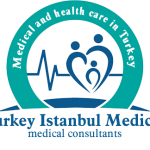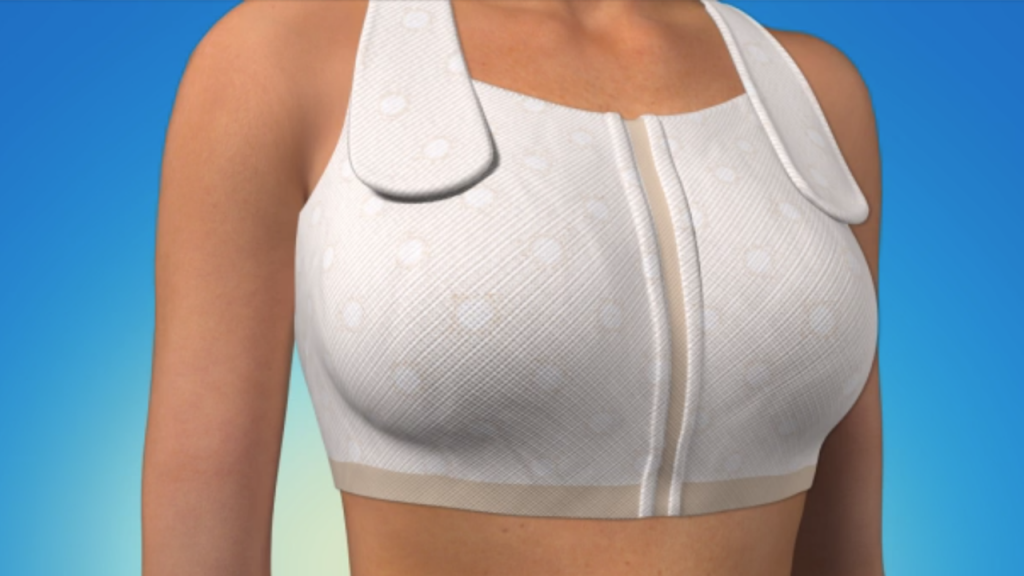Breast Lift with Implants
Breast Anatomy
It’s important to understand the structure of the breast to understand why breast shape changes over time. Your breasts are made up of primarily fatty and glandular tissues which determine the size and shape. Firmness and lift are influenced by how well ligaments connected to the chest wall support your breasts. The fatty tissue and ligaments surround the milk-producing glandular tissue and milk ducts. Breasts also contain blood vessels and lymph vessels that help the body fight off infection. The pectoralis muscles lie underneath the breasts, separating them from the chest wall. The breast does not contain muscle tissue, except for tiny muscle fibers in the nipple. The circular, darker region around the nipple is called the areola, and the nipple and areola region together form the nipple-areola complex..
What Causes Breasts to Change Shape?
While many factors contribute to the sagging of the breasts, the aging process and the effects of gravity play a primary role in breast changes. Over time, the skin around the breast loses its elasticity due to a gradual breakdown of the skin’s support network. Additionally, the suspensory ligaments that attach the breast to the chest wall weaken and stretch in response to gravity. Changes in the breasts during pregnancy and breastfeeding also play a part in the development of sagging breasts. Breast enlargement during pregnancy and breastfeeding causes the skin to stretch. Following pregnancy, the breasts reduce in size and the skin that was once stretched becomes loose and sags. Lastly, fluctuations in your weight and hormones can cause your breasts to change in appearance. In combination, these factors can cause the breast to sag and point downward.
How a Breast Lift with Implants Works
During a breast augmentation procedure, breast implants are placed inside a pocket behind the existing breast tissue. However, this procedure alone may not correct sagging breasts. During a breast lift procedure, excess skin is removed, the breast tissue is reshaped, and the remaining skin is tightened. As a result, the overall shape of the breasts is improved, and they are lifted to a new, more upright, youthful position. Breast augmentation in combination with a breast lift results in total breast rejuvenation by increasing the size of the breast while restoring a firmer, more youthful appearance.
Surgery Preparation
Breast augmentation in combination with a lift may last approximately two to four hours, depending on the complexity of the procedure and the surgical technique that is used. Your surgeon will draw incision guidelines on your breasts. Before the start of your procedure, an anesthetic will be administered. Your surgeon will most likely administer general anesthesia which causes you to sleep during the procedure.
Breast Augmentation Procedure
To begin the procedure, the surgeon will make a skin incision. The incision length, placement, and appearance may vary depending on the type and size of the implant, your body contours, and the surgeon’s preference. If you are interested in learning about the different breast augmentation techniques, please view our breast augmentation animation. Your surgeon will separate the breast tissue to reach the area of the breast in which a pocket will be formed and carefully create the pocket where the breast implant will be placed. Breast implants can be placed in two general locations, known as either subglandular or submuscular placement. This animation depicts subglandular placement in which the breast implant is placed in a pocket formed beneath the breast tissue, but above the pectoralis muscle. You should discuss the benefits of the different implant placement options in more detail with your surgeon. There are two types of breast implants known as saline and silicone implants. This animation demonstrates the placement of silicone implants. Your surgeon will insert the implants into the pocket using fingers or a touchless device and will inspect your breasts to ensure they are symmetric. Adjustments may be made to the pocket and the position of the breast implant itself to ensure that the desired look is achieved.
Breast Lift Procedure
Once the breast implants are in place, the surgeon will begin the breast lift procedure. This animation demonstrates the vertical technique. If you are interested in learning about the different breast lift techniques, please view our breast lift animation. An incision is made along the pre-marked lines. The area that extends above the areola marks the new upper perimeter of the areola. The v-shaped area below the areola will be pulled together and tightened, lifting the breast. Using a variety of surgical instruments, the surgeon lifts the skin and separates it from the underlying tissues below. While the breast skin is removed, the areola nipple complex is left intact. Some doctors may choose to use internal sutures within the glandular tissue or a mesh product to give the breast additional support. Once the excess skin has been removed, the new skin edges are brought together and temporarily held in place with surgical staples or clamps and the nipple-areola complex is slid into its new, higher position, revealing the basic shape of the new breast. The surgeon will close the incision by placing internal, dissolvable sutures around the new border of the areola and along the skin edges. Some surgeons choose to place external sutures along the incision as well. Before closing the incision completely, a surgical drain may be placed inside each breast. Lastly, surgical tape or bandages are applied to protect the incision sites as you heal.
Recovery
Breast lift procedures typically are done in outpatient surgery facilities, meaning you should be ready to go home the same day, usually within one to two hours following surgery. Before you leave, your doctor may fit you with a compression dressing or bra to help reduce swelling by preventing fluid buildup, as well as provide comfort and support as you heal. You may also be prescribed medication to manage your pain for the first few days and as needed. It is a good idea to allow yourself several days to recover before resuming your daily activities. Be sure to follow your surgeon’s recovery plan, including activity and lifting restrictions, to avoid complications and allow your body time to heal. If surgical drains are present, they, along with any bandages, will likely be removed within the first week following surgery, while any non-dissolvable stitches may stay in place for seven to ten days. Dissolvable sutures will be absorbed by the body in about four to eight weeks. You may experience some minor pain, bruising, and swelling, as well as numbness around the areola, all of which should decrease in several weeks.
Risks and Results
Consult your surgeon regarding how implants may affect breastfeeding and mammograms; risks such as rupture or capsular contracture, in which scar tissue may compress and distort an implant; and options for future revision since implants are not intended to last a lifetime. You will notice a difference in the size, shape, and position of your breasts immediately following your procedure. You may continue to notice a change in the appearance of your breasts as swelling decreases. It may take up to one year before the final results from your procedure are apparent. The scars from your incisions will typically fade to thin, slightly discolored lines over several months. It is important to realize that your breasts will continue to change shape over time. A breast lift with implants cannot stop the aging process, but it can restore the fuller, shapelier appearance that you desire for years to come.

